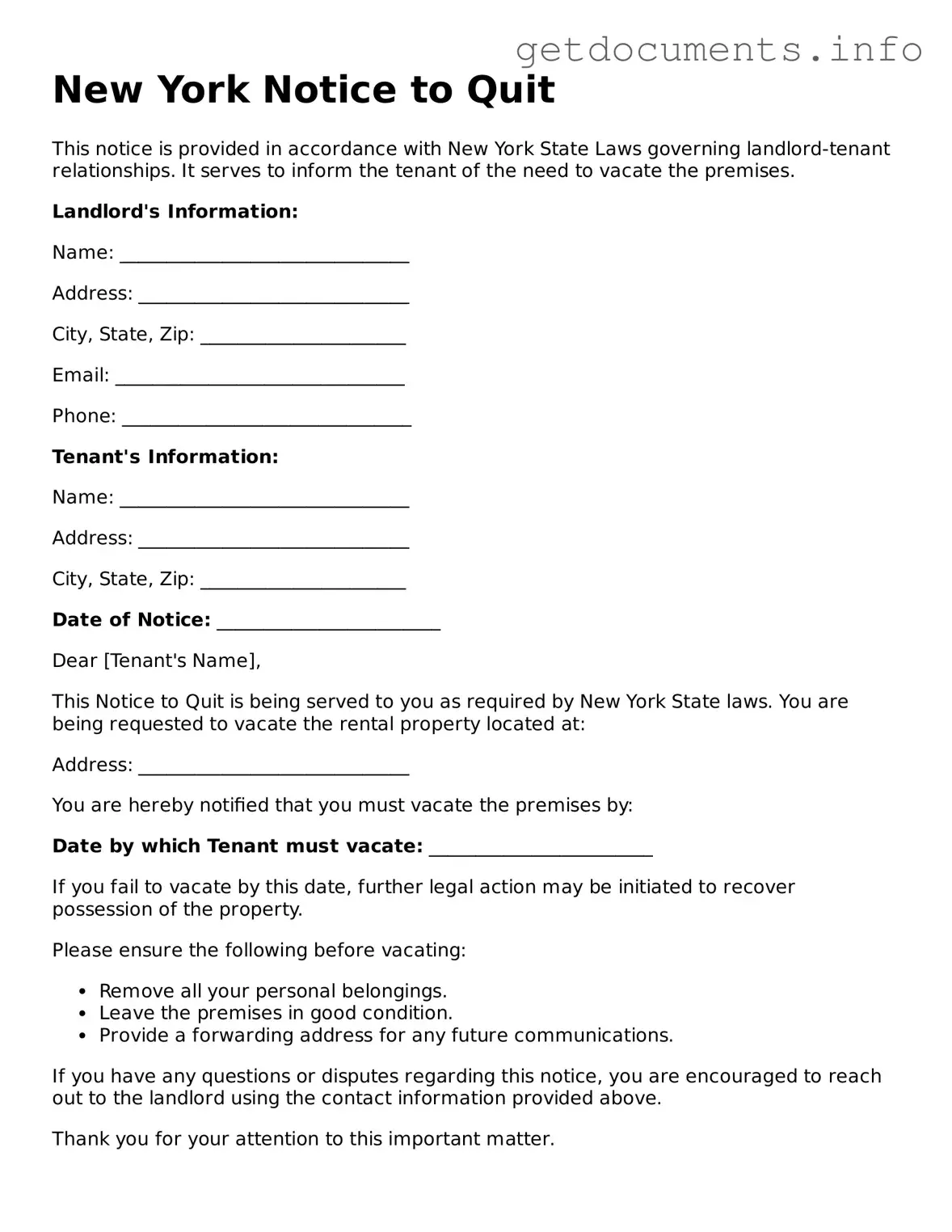Free Notice to Quit Template for New York
The New York Notice to Quit form is a legal document that landlords use to inform tenants that they must vacate the rental property. This notice typically outlines the reasons for eviction and provides a specified timeframe for the tenant to leave. Understanding how to properly fill out and serve this form is essential for both landlords and tenants navigating the eviction process.
If you need to fill out the Notice to Quit form, click the button below to get started!
Access Notice to Quit Editor
